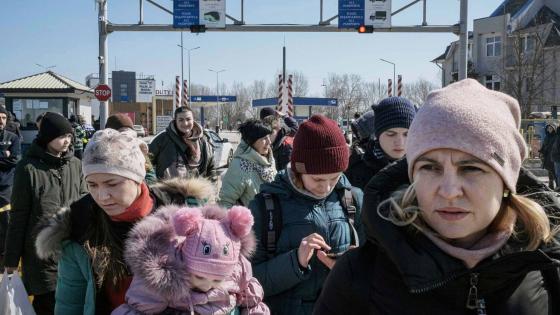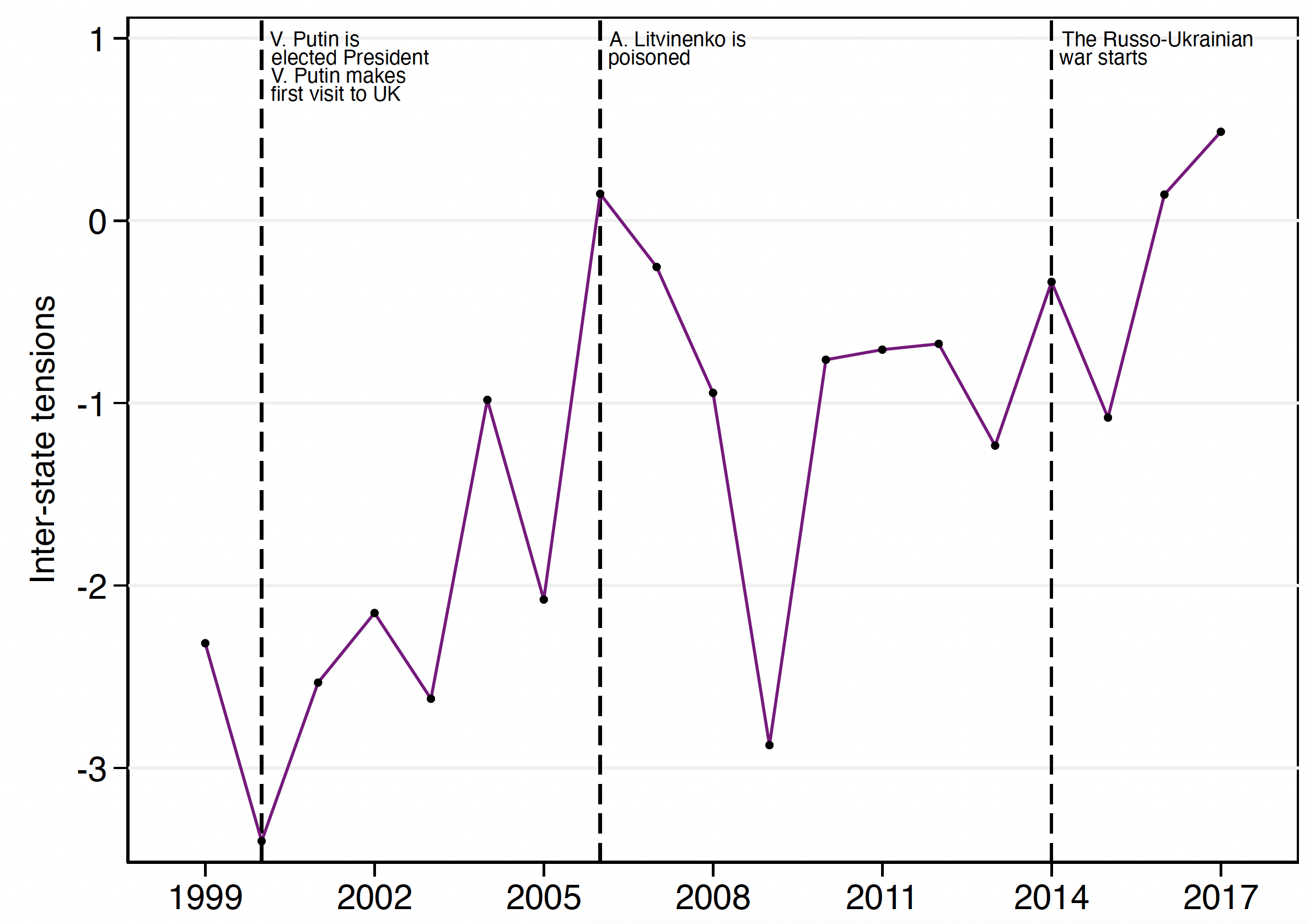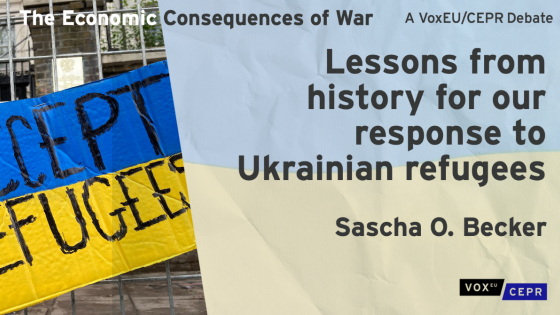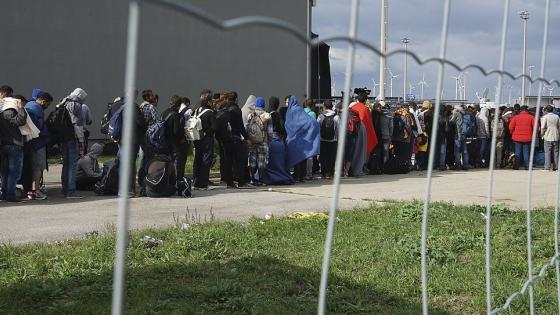Recent intra-national and international conflicts, such as the Syrian Civil War and the Russian invasion of Ukraine, have forced millions of individuals to leave their homes and seek asylum in a different country.
In the face of such catastrophes, EU member states have responded by admitting greater numbers of refugees (Hatton 2022).
There have been several attempts to harmonise asylum policies across the EU member states. Following the adoption of the 1990 Dublin Convention, the member states have sought to establish a common European asylum framework that would clarify the responsibilities of the receiving country and prevent multiple submissions.
That said, member states retain national sovereignty over asylum policies, leading to significant cross-country disparities in their implementation (Dustmann et al. 2017, Hatton 2017).
Strikingly, refugees fleeing the same country of origin face different admission rates depending on the country where they filed their demand (Neumayer 2005, Toshkov and de Haan 2013). This suggests that factors unrelated to humanitarian concerns play a role in the granting of refugee status.
In a recent contribution (Cucu and Panon 2022), we show that inter-state political tensions impact the asylum policies the EU member states implement. The lack of asylum-policy coordination at the EU level and the ensuing arbitrariness may hinder the integration of refugees into the host country and prevent them from making a positive contribution to the EU economy.
Asylum policies as a foreign policy tool
The international-relations scholarship has long suspected that asylum policies are not driven by humanitarian concerns alone. Among the non-humanitarian determinants of refugee admissions, foreign policy objectives have loomed large. As the argument goes, host countries use asylum grants as an overt acknowledgement of human rights violations by the country of origin and use them to delegitimise and increase pressure on adversarial regimes (Scheinman 1983, Teitelbaum 1984). Hosting refugees may also contribute to the emergence of dissident communities in exile and deprive origin countries of human capital (Turkoglu 2021).
History provides ample evidence supporting this argument. During the Cold War, the US asylum policy was overtly biased in favour of refugees leaving the Communist bloc and its allies, and against refugees from partner, usually right-leaning, regimes (McBride 1999). In the 1980s, Zimbabwe was reluctant to grant immediate refugee status to Mozambicans in an effort to maintain good diplomatic relations with its neighbour (Jacobsen 1996). Tanzania was accused by its rival Burundi of tolerating the presence of political and military rebels in its refugee camps and allowing them to conspire against the Burundian government (Jacobsen 2002). By the same token, Pakistan admitted more refugees from Afghanistan than from Iran (Moorthy and Brathwaite 2016).
In light of these considerations, we expect governments to adopt asylum policies that are more generous towards asylum seekers fleeing rival countries, after controlling for humanitarian conditions in the country of origin.
Empirical setup
In order to test this hypothesis, we use data on asylum applications in the EU from 1999 to 2017. We measure the generosity of asylum policies using asylum recognition rates, defined as the share of asylum decisions that led to the grant of some form of protection (either full refugee status or temporary/subsidiary humanitarian protection).
We also construct a measure of international tensions based on the occurrence of international events. To this aim, we use the Global Database of Events, Language, and Tone to identify episodes of international conflict and cooperation and exploit a score that captures their potential impact to characterise dyadic behaviour. Specifically, our main measure of inter-state tensions corresponds to the average score across all events that occurred in a given year, with positive values indicating conflict and negative values indicating cooperation.
Figure 1 Inter-state tensions between Russia and the UK, 1999–2017
Figure 1 shows the measure of tensions in the context of UK-Russia relations. There are signs of a rapprochement between the two countries in the late 1990s, as Vladimir Putin accedes to the presidency of the Russian Federation and chooses the UK as his first presidential trip to a Western country. This is short-lived, however, as tensions between the two countries increase over the next years. Tensions between the two countries peak in 2006 following the poisoning of the Federal Security Service officer Alexander Litvinenko. More recently, tensions embarked on an upwards trend after the start of the Russo-Ukrainian War.
Evidence
We empirically estimate the relationship between inter-state tensions and asylum recognition rates using a gravity specification, typically used in the international trade literature (Head and Mayer 2014).
Asylum recognition rates are defined at the country-pair level, with push and pull factors and other bilateral factors being at play (Aksoy and Poutvaara 2019). To control for them, we estimate regression models that include time-varying origin- and destination-specific fixed effects, as well as country-pair-specific fixed effects. Within-pair variation over time helps us measure how changes in inter-state bilateral tensions affect recognition rates.
We provide additional evidence in favour of a causal interpretation of our estimates by implementing several falsification exercises. First, we calculate recognition rates for asylum seekers from a given country of origin in all EU member states that share a border with the current destination. Second, we calculate aggregate recognition rates in a given country of destination for asylum seekers that flee countries neighbouring the current origin. Finally, we reconstruct our original measure of bilateral tensions using events that only involve non-governmental actors (such as multinational companies and NGOs).
Our results can be summarised as follows:
- An increase in inter-state tensions leads to higher asylum recognition rates.
- The effect is large. A five-unit increase in our measure of tensions, which corresponds, for instance, to the difference between issuing an invitation and expressing a formal complaint, raises recognition rates by almost 2 percentage points. This amounts to an increase of 10% relative to the average recognition rate.
- The effect is driven by verbal acts of conflict and cooperation, rather than material acts.
- We only estimate a positive and significant effect for events that involve national governments. Events involving non-governmental actors do not affect asylum recognition rates. Nor do we estimate a significant impact on the counterfactual recognition rates described above.
- The effect is short-lived: tensions do not affect recognition rates after more than one year.
Policy implications
While the 1951 United Nations Geneva Convention relating to the Status of Refugees and its related 1967 protocol establish the legal rights of refugees and the obligations of the receiving country, they do not define specific rules and procedures on how governments are to assess the individual merit of an application.
Our finding that, in addition to the humanitarian conditions in the country of origin, asylum policies are driven by inter-state tensions is worrisome. Insofar as the chances of being granted asylum depend on the country where the demand was filed and its relationship with the country of origin, asylum seekers are exposed to an unfair degree of arbitrariness. Defining clearer admission criteria, ideally harmonised across EU member states (Becker 2022), is needed more than ever at a time when the world experiences renewed levels of conflict.
References
Aksoy, C G, and P Poutvaara (2019), “Refugees and irregular migrants in Europe: Self-selection and sorting”, VoxEU.org, 5 September.
Becker, S O (2022), “Lessons from history for our response to Ukrainian refugees”, VoxEU.org, 29 March.
Cucu, F, and L Panon (2022), “Asylum policies and international tensions,” European Economic Review, 104322.
Dustmann, C, F Fasani, T Frattini, L Minale, and U Schönberg (2017), “On the economics and politics of refugee migration”, Economic Policy 32: 497–550.
Hatton, T J (2017), “Refugees and asylum seekers, the crisis in Europe and the future of policy”, Economic Policy 32: 447–496.
Hatton, T J (2022), “Asylum recognition rates in Europe: Policies and performance”, European Journal of Political Economy, 102267.
Head, K, and T Mayer (2014), “Gravity equations: Workhorse, toolkit, and cookbook”, in Handbook of International Economics, vol. 4, Elsevier.
Jacobsen, K (1996), “Factors influencing the policy responses of host governments to mass refugee influxes”, International Migration Review 30: 655–78.
Jacobsen, K (2002), “Can refugees benefit the state? Refugee resources and African statebuilding”, Journal of Modern African Studies 40: 577–96.
McBride, M J (1999), “The evolution of US immigration and refugee policy: Public opinion, domestic politics and UNHCR”, Centre for Documentation and Research, United Nations High Commissioner for Refugees.
Moorthy, S, and R Brathwaite (2016), “Refugees and rivals: The international dynamics of refugee flows”, Conflict Management and Peace Science.
Neumayer, E (2005), “Asylum recognition rates in Western Europe: Their determinants, variation, and lack of convergence”, Journal of Conflict Resolution 49: 43–66.
Scheinman, R S (1983), “Refugees: Goodbye to the good old days”, Annals of the American Academy of Political and Social Science 467: 78–88.
Teitelbaum, M S (1984), “Immigration, refugees and foreign policy”, International Organization 38: 429–450.
Toshkov, D, and L De Haan (2013), “The Europeanization of asylum policy: An assessment of the EU impact on asylum applications and recognitions rates”, Journal of European Public Policy 20: 661–83.
Turkoglu, O (2021), “Supporting rebels and hosting refugees: Explaining the variation in refugee flows in civil conflicts”, Journal of Peace Research, 136–49.




